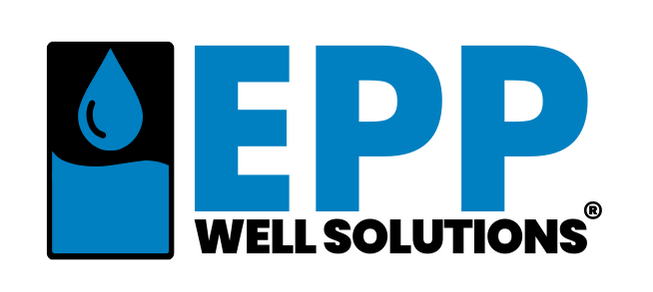How to Make a Low Yield Well Meet Peak Water Demand
A low-yield well can feel like a lifeline with a catch—fine for quiet days, but a struggle when water needs spike. Whether it’s a busy morning of showers, a hot afternoon of irrigation, or a house full of guests, peak demand can push a sluggish well past its limit. Producing less than a gallon per minute, these wells often leave you juggling priorities or staring at dry taps. But you don’t need a miracle to make it work. With the right tweaks, you can stretch that modest flow to handle your busiest times.
What Makes Peak Demand Tough on Low-Yield Wells
Peak demand is when your water use jumps—think laundry piling up, crops needing a soak, or everyone showering at once. A low-yield well struggles here because its aquifer might refill slowly, or drought has lowered the water table. Pull too much too fast, and it’s tapped out. Clogged pipes or a shallow well can make it worse, choking the flow just when you need more.
You’ll spot the trouble when pressure fades, faucets spit air, or water stops mid-task. It’s not about turning your well into a firehose—that’s rarely an option—but about managing what it gives you so peak moments don’t catch you short.
Option 1: Spread Out the Load
One easy fix is to space out your water use. Skip running the washer and sprinklers together—do one in the morning, the other at night. Take quick showers, water plants late, and hold off on big jobs when others are using the tap. Add low-flow fixtures—like a showerhead at 1.5 gallons per minute—and you’ll cut each task’s draw.
This costs almost nothing, maybe $20 for a new faucet head. It works by keeping use under the well’s max, letting it catch its breath. But it’s a hassle if your schedule’s tight or needs are big—think livestock or a full house. It’s a dodge, not a solution, and peak demand can still trip you up.
Option 2: Stockpile with a Tank
A storage tank can save the day by banking water ahead of time. Let the well fill it slowly—say, overnight—then pull from the tank when demand hits hard. A 500-gallon tank with a booster pump keeps pressure steady, even if the well’s barely dripping. You’re looking at $2,000 to $3,000 in parts.
It’s handy for planned peaks—like weekend watering or extra guests—giving you a cushion without rushing the well. Downside? It doesn’t up the well’s output. A super-slow well takes forever to fill it, and without care, you might overdraw and run dry. Plus, it needs space and a bit of power. It’s a helper, not a fix.
Option 3: Drop the Pump Lower
If the water’s dipped below your pump—say, after a dry spell—lowering it can grab what’s left. Move it deeper in the well, and it might keep up during a busy stretch. This runs $500 to $1,500 with a pro’s help, depending on the job.
It’s a cheap boost if water’s still down there, buying you time for peak use. But it’s temporary—if the water table keeps dropping or the aquifer’s weak, it won’t last. Too low, and you’ll pull mud, gumming up the works. It’s a Band-Aid, not a backbone.
Option 4: Control with a Timer
Add a timer to your pump—or flip it manually—to pull water on your terms. Run it an hour at night to fill a tank, then shut it off to rest the well. Time it right, and you’ve got water ready for the rush. A timer’s $50 to $100; manual’s free if you’re on it.
It’s a low-cost way to pace things, saving water for peak hours. But it’s fiddly—adjusting for weather or use takes effort, and missing a switch leaves you dry. It’s smart for steady days, shaky when demand’s wild.
The Well Harvester: The Peak-Time Winner
Enter the Well Harvester—a system that doesn’t just manage peak demand but owns it. It uses sensors to check your well’s water live, drawing only what’s safe, never pushing it too far. That water fills tanks—215 gallons to start, more if you need—stocking up for when you’re maxed out. A booster pump sends it to your taps at full force, so peak chaos feels like a normal day.
The Harvester’s strength is its smarts. It runs itself, tweaking the draw as conditions shift—no babysitting needed. It adapts to dry spells or wet weeks, even self-tuning for maximum output. It’s simple to install—fits in a small space—and built to last through countless peaks. Morning rush or summer heat, it keeps you covered.
Against the others, it’s a standout. Spreading use is free but limiting—fine for solo living, not a crowd. Tanks help but lack the Harvester’s control; they’re static, not savvy. Lowering the pump’s a quick lift, not a long haul. Timers need your eye; this doesn’t. The Well Harvester turns your well into a peak-time pro, no compromise.
When It’s Too Far Gone: New Well Time
If your well’s yield is near zero—less than a quarter-gallon per minute—or the aquifer’s done, a new well might be it. Drilling’s $10,000 to $20,000, a last-ditch move if peak demand’s a lost cause. A driller can try a new spot, but it’s a gamble. Hold off unless all else fails.
Peak Demand, Low Yield
A low-yield well can meet peak demand with the right play. Spread use, stockpile in tanks, lower the pump, or time it tight—each can get you by. But the Well Harvester takes it home: it’s your well’s wingman, making peak times painless. It’s not about more water—it’s about better use when you need it.
At Epp Well Solutions, we’ve got your back. Low-yield well tripping you up at peak? Grab a free quote and see how the Well Harvester can keep you flowing. Don’t sweat the rush—handle it smart.


